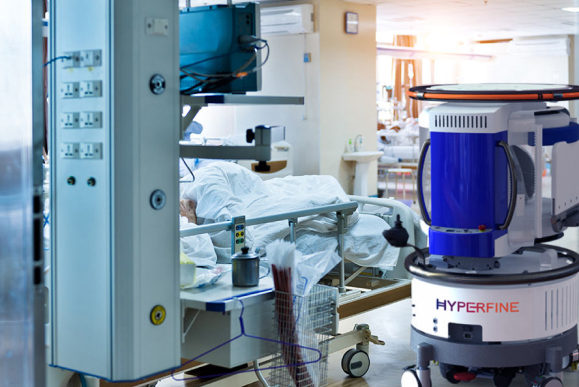HyperFine Nets FDA Clearance for Software Update Enabling Faster Acquisition Times

Hyperfine announced the FDA clearance of the ninth generation of AI-powered Swoop system software. This advanced software significantly reduces scan times across multiple MR sequences without sacrificing image quality.
These scan time reductions may enable Swoop system images to help speed up the diagnostic process in acute care settings, which is crucial for time-sensitive medical conditions such as stroke, where every second counts. Reducing the overall acquisition time for sequences can also decrease the negative impact of patient motion on image quality.
Professor Adnan Siddiqui, MD, PhD, from the University of Buffalo, emphasized the impact of rapid imaging capabilities, saying,
“Timely MR brain imaging is essential for clinicians making critical treatment decisions, particularly in acute neurological episodes like strokes. We have been an active site in the ACTION PMR study assessing the use of the Swoop system in stroke diagnosis, and this latest software will help the Swoop system more seamlessly integrate into stroke workflows. It is wonderful to see Hyperfine respond quickly to clinical feedback and continue to innovate to improve the Swoop system.”
The total number of Hyperfine AI-powered marketing authorizations places the company in a leading position on the FDA’s Artificial Intelligence and Machine Learning (AI/ML)-Enabled Medical Devices list, underscoring the commitment of Hyperfine to leveraging AI to advance ultra-low-field portable MR brain imaging technology and improve patient care.
“With the release of our ninth-generation AI-powered software, we continue to broaden the clinical utility and workflow fit of the Swoop system,” said Tom Teisseyre, Chief Operating Officer at Hyperfine. “The balance between speed and image quality is crucial in acute care settings where early and timely information is essential to inform the best decisions for patients. We’re proud of every step we’ve taken with the Swoop system, learning from and responding to our user base and the broader medical community.”
